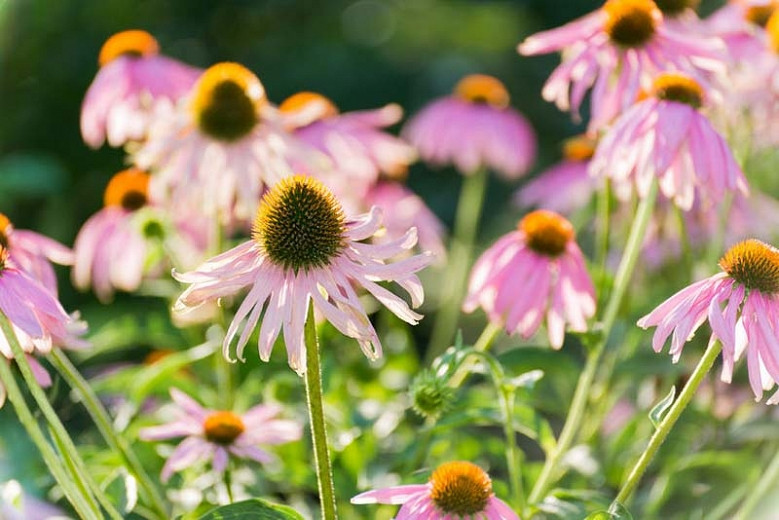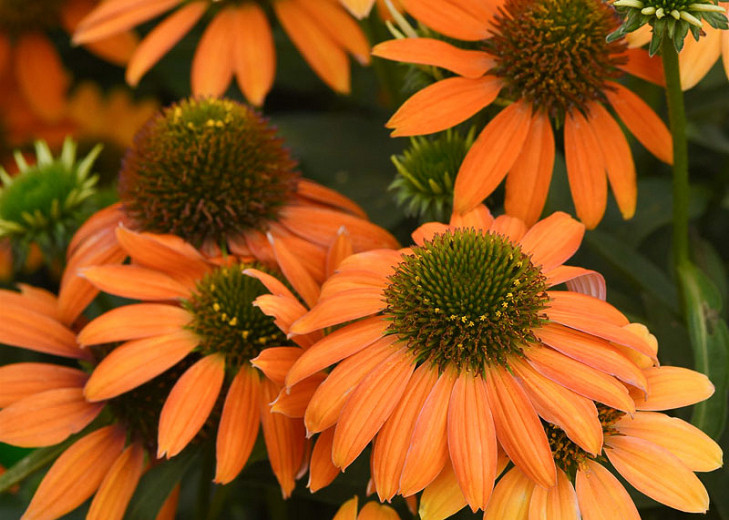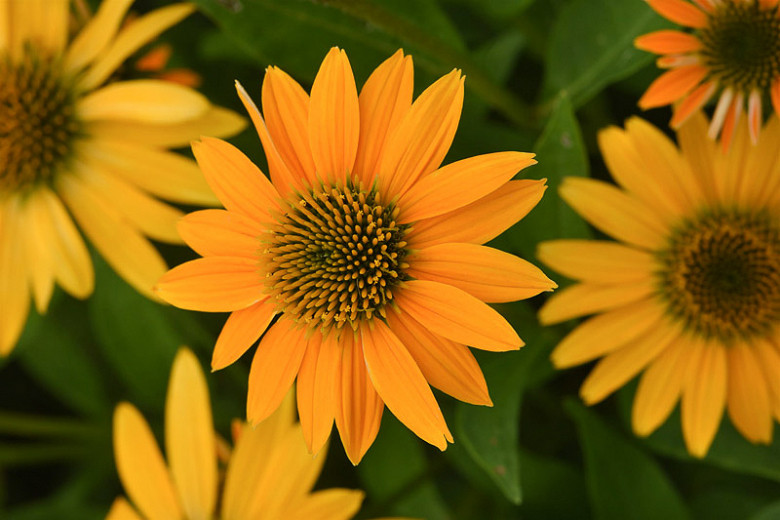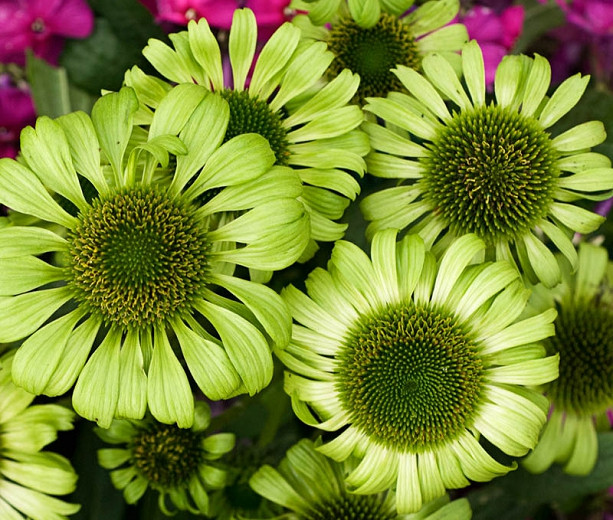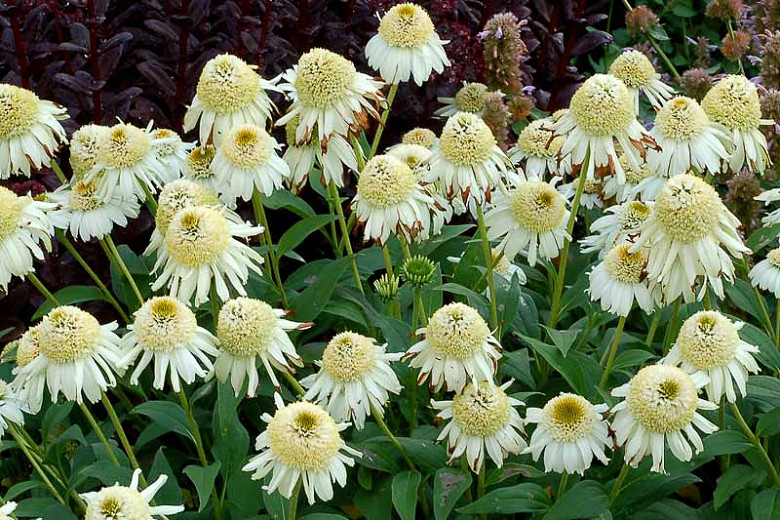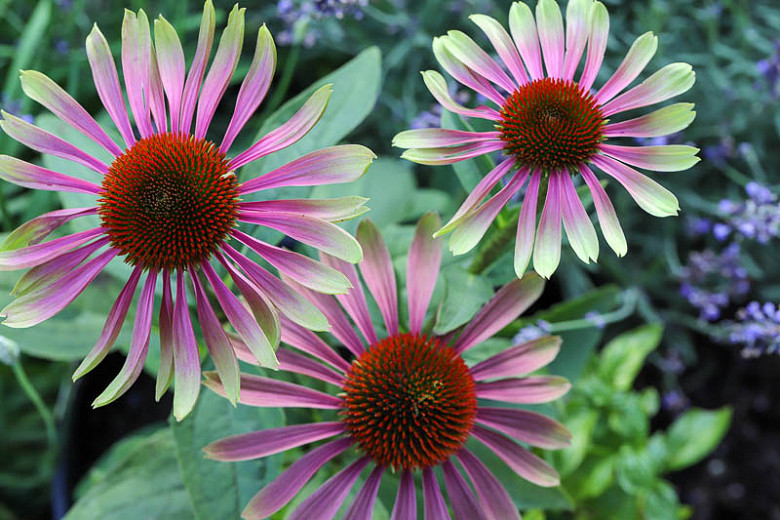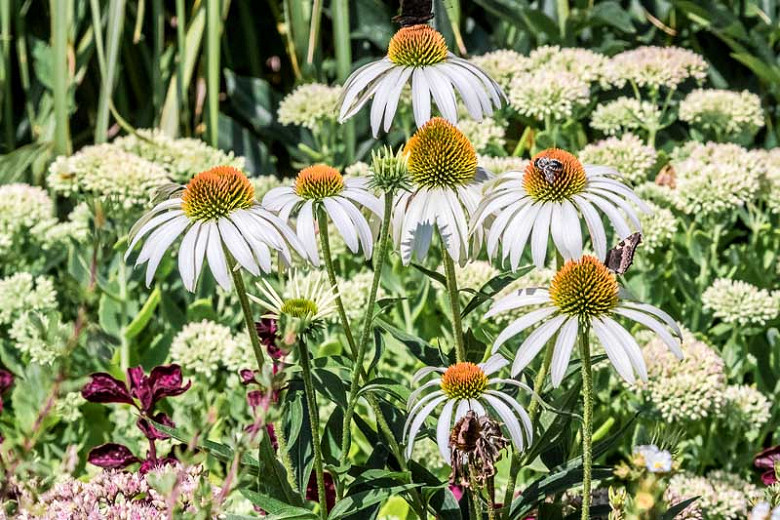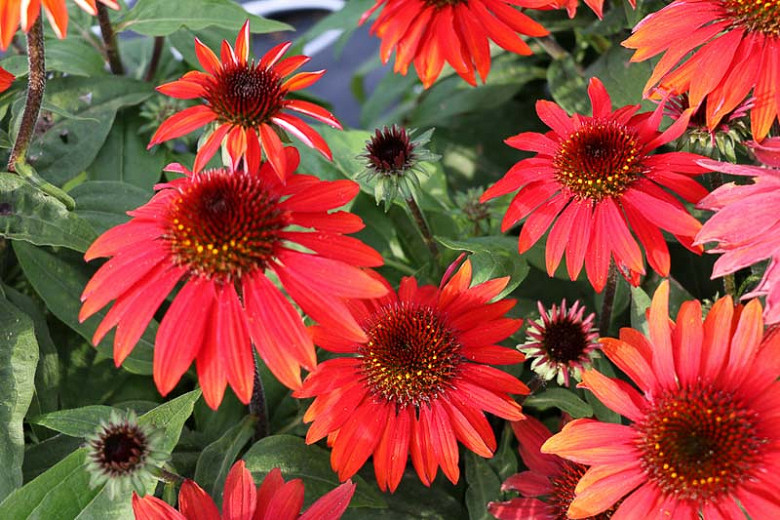Echinacea (Coneflowers)
Tough as nails, Coneflowers (Echinacea) are wonderful additions to the landscape with their brightly colored blossoms to be enjoyed over a long flowering season. Simple to grow, mostly trouble-free, and thriving on neglect, these members of the Asteraceae family (along with daisies, sunflowers, and asters), are reliable performers that are tolerant to almost everything! Loved by butterflies, birds, and bees, Coneflowers have won the hearts and minds of many gardeners.
Tough as nails, Coneflowers (Echinacea) are wonderful additions to the landscape with their brightly colored blossoms to be enjoyed over a long flowering season. Simple to grow, mostly trouble-free, and thriving on neglect, these members of the Asteraceae family (along with daisies, sunflowers, and asters), are reliable performers that are tolerant to almost everything! Loved by butterflies, birds, and bees, Coneflowers have won the hearts and minds of many gardeners and are increasingly in vogue as garden perennials, cut flowers, or landscape plants.
They have such a long list of virtues that should not be overlooked!
- Truly an American plant, native to the central and eastern part of the country, Echinacea were used by the early native Americans to cure wounds or infections. A great prairie flower, its bright and large blossoms made a successful transition to the backyard. Until recently, almost all Echinacea in the garden were selections of Echinacea Purpurea with colors ranging from purple through pink to white and with ray flowers generally drooping downward.
- But Echinacea has seen significant growth in breeding activity – and it would be an understatement to say that breeders have been having fun with them! There is an incredible diversity of Coneflowers available today, offering a rich variety of brilliant hues and fancy forms with ray florets held horizontal, single, or even doubled, giving them the look of a Chrysanthemum. Some are fragrant, dwarf, or variegated. All have their eye-catching blossoms carried on sturdy erect stems and rise atop the lovely medium-green background of the foliage. They rarely require staking.
- Echinaceas are herbaceous perennials with a fairly long blooming season extending from late spring to late summer and for some even until frost. They are perfect choices for beds and borders, naturalized areas, meadows, prairies, and wildflower gardens.
- Echinacea are excellent as cut or dried flowers. A wonderful addition to garden bouquets, they may last up to 2 weeks in a vase! After the petals have fallen, the cones are very ornamental in dried arrangements.
- Echinacea grow in clumps up to 18-48 in. tall (45-120 cm) on strong erect stems, and thrive in full sun or light shade. They prefer average, dry to medium, well-drained soils. Avoid overly rich or fertile soil or the plant might become leggy. Hardiness varies across varieties, with a range from USDA 3 to 10.
- Echinacea are a great choice for pollinator-friendly or butterfly gardens. All summer, clouds of butterflies find the Coneflower blossoms irresistible, sipping their nectar. Their cone-shaped flower heads, resembling hedgehogs with their spiny appearance, are also very attractive to birds who will feast on their seeds. Allow a few stems to set seeds and sprinkle the seeds from the dried cones in the fall and your Echinacea plants will reseed, with new blossoms growing the following season.
- Drought, deer, heat, humidity, and poor soil tolerant! Tough, Echinacea easily withstand heat, high humidity, partial shade, drought, and extreme cold and comes back every year! However, despite this long list of tolerances, it should be noted that the ability to withstand soggy conditions is not one of them. Echinacea are generally low maintenance. Simply deadhead florets to encourage further growth and divide them every few years to keep them healthy. No additional fertilizing is required because it would lead to leggy plants that may flop over. Avoid over-watering as Echinacea prefer drier conditions once established.
Guide Information
| Hardiness | 3 – 10 |
|---|---|
| Heat Zones | 1 – 9 |
| Climate Zones | 1, 2, 3, 4, 5, 6, 7, 8, 9, 10, 11, 12, 13, 14, 15, 16, 17, 18, 19, 20, 21, 22, 23, 24, 1A, 1B, 2A, 2B, 3A, 3B, A2, A3 |
| Plant Type | Perennials |
| Plant Family | Echinacea – Coneflowers |
| Exposure | Full Sun |
| Season of Interest | Spring (Late)Summer (Early,Mid,Late)Fall |
| Height | 1' – 4' (30cm – 120cm) |
| Spread | 1' – 3' (30cm – 90cm) |
| Spacing | 18" – 30" (45cm – 75cm) |
| Water Needs | Low, Average |
| Maintenance | Low |
| Soil Type | Chalk, Loam, Sand |
| Soil pH | Acid, Alkaline, Neutral |
| Soil Drainage | Well-Drained |
| Characteristics | Dried Arrangements, Cut Flowers, Fragrant, Showy |
| Tolerance | Clay Soil, Deer, Drought, Dry Soil, Rocky Soil |
| Attracts | Bees, Birds, Butterflies, Hummingbirds |
| Landscaping Ideas | Beds and Borders, Patio and Containers, Small Gardens |
| Garden Styles | Informal and Cottage, Prairie and Meadow |
